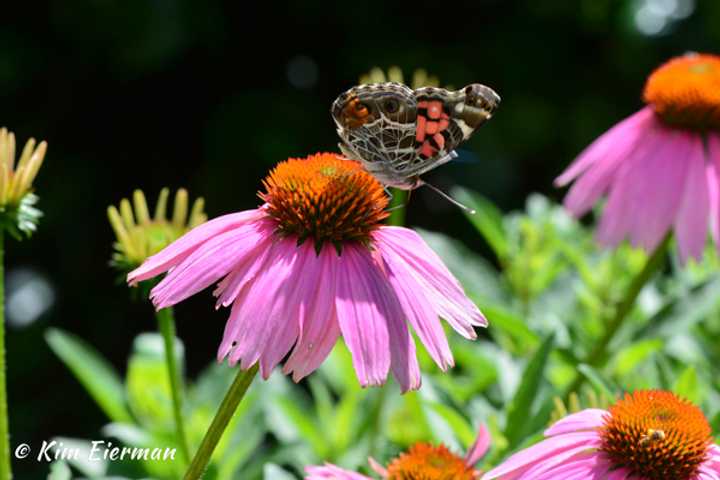So what do butterflies want from your garden?
Host Plants
If you want more butterflies, you must plant more host plants - those plants that provide butterfly caterpillars with the leaves that they eat. By now, you have likely heard that Monarch butterfly caterpillars eat native milkweeds – in fact Monarchs are obligate feeders on milkweed, and can eat nothing else.
These evolutionary associations exist between other butterflies and plants, as well. Some caterpillar species eat the leaves of only one plant or a handful of plants, while other caterpillars eat leaves of a broader array of plants. A host plant tip sheet is available here: http://www.ecobeneficial.com/product/native-host-plants-caterpillars/
Many host plants are native trees and shrubs. Some of these valuable woodies include Black Cherry, Chokecherry, Wild Plum (Prunus species), Oaks (Quercus species), Lowbush and Highbush blueberries (Vaccinium species), Hackberry (Celtis occidentalis), Black Walnut (Juglans nigra), Birches (Betula species), native Viburnums, native Dogwoods, and many more. Many native perennials are also butterfly host plants. “Native” is the operative word. Skip the Asian Butterfly Bush.
Nature in Balance
As you may have guessed, there will be some holes in the leaves of your host plants, as hungry caterpillars obtain the fuel they need to get to the next stage of metamorphosis. Tolerating some leaf damage in return for the reward of adult butterflies is absolutely essential. If you have a densely planted landscape with a broad array of native plants, you will likely not even notice.Nature isn’t perfect, nor should your landscape be.
Nectar Plants
We have quite a few native plants that serve both as host plants as well as nectar plants. While Milkweeds (Asclepias species) are critical host plants for Monarchs, they also provide nectar for a vast array of other butterflies, moths and bees. Some other “double-duty” native perennials include: Black Cohosh (Actea racemosa), Goatsbeard (Aruncus dioicus), White Turtlehead (Chelone glabra), Sneezeweed (Helenium autumnale), sunflowers (Helianthus species), Wild Lupine (Lupinus perennis), beardtongues (Penstemon species), asters, violets, and numerous others.
Winter Cover
Not only do many caterpillars overwinter in our landscapes, some adult butterflies do as well. Species like the Mourning Cloak butterfly survive our cold winters by hibernating with the protection of an anti-freeze like substance in their bodies.
So where do these creatures go during the cold months? You may see caterpillars overwintering on twigs or in leaf litter; butterfly adults may take refuge in leaf litter, or under the protruding bark of trees like Shagbark Hickory. How can you help them? Leave leaf litter in place, be careful what you prune from woody plants, and plant trees that offer refuge to overwintering butterflies and other wildlife.
Kim Eierman, a resident of Bronxville, is an environmental horticulturist and Founder of EcoBeneficial. When she is not speaking, writing, or consulting about ecological landscapes, she teaches at the New York Botanical Garden, Brooklyn Botanic Garden, The Native Plant Center and Rutgers Home Gardeners School.
Click here to follow Daily Voice Norwalk and receive free news updates.
